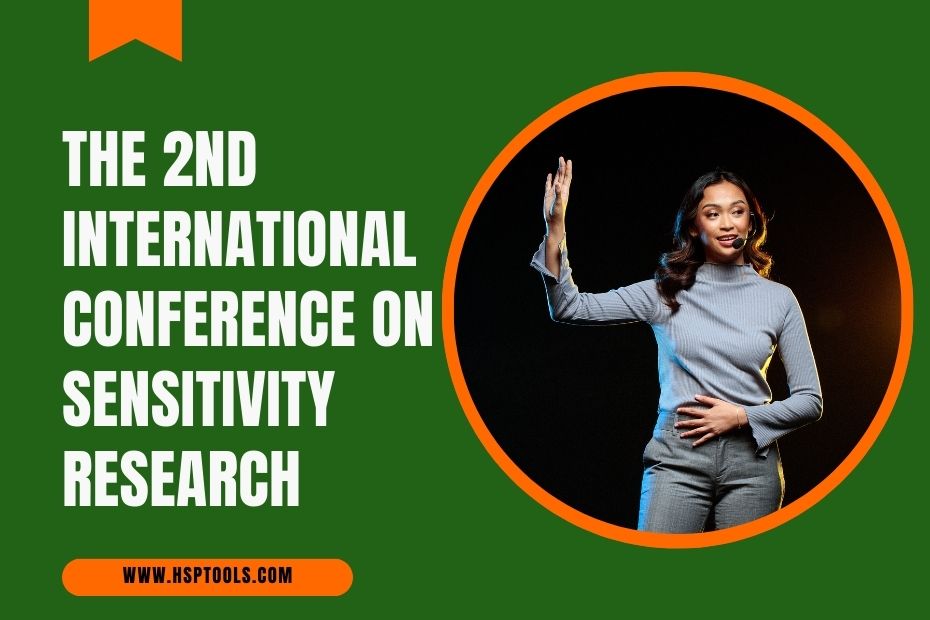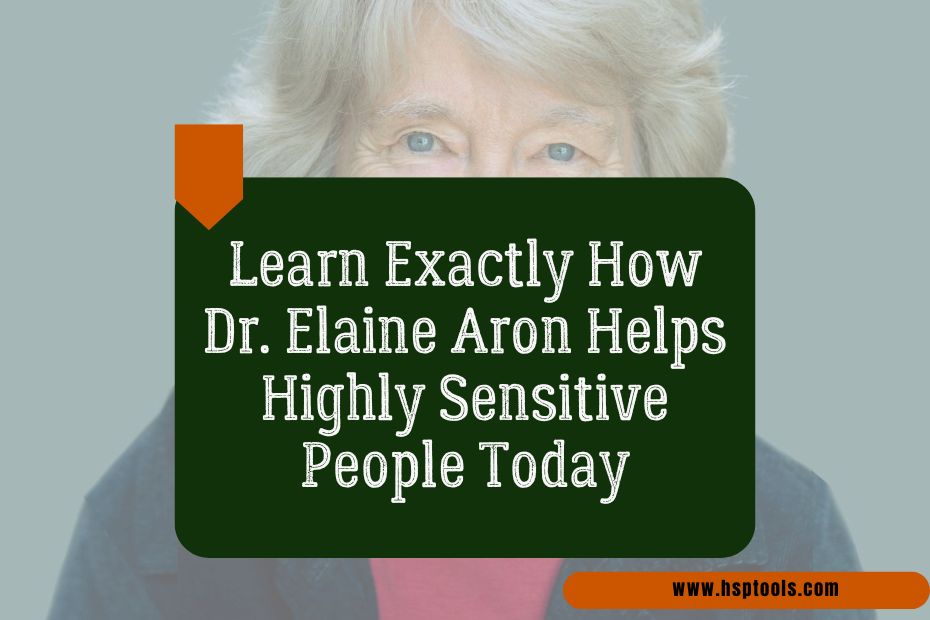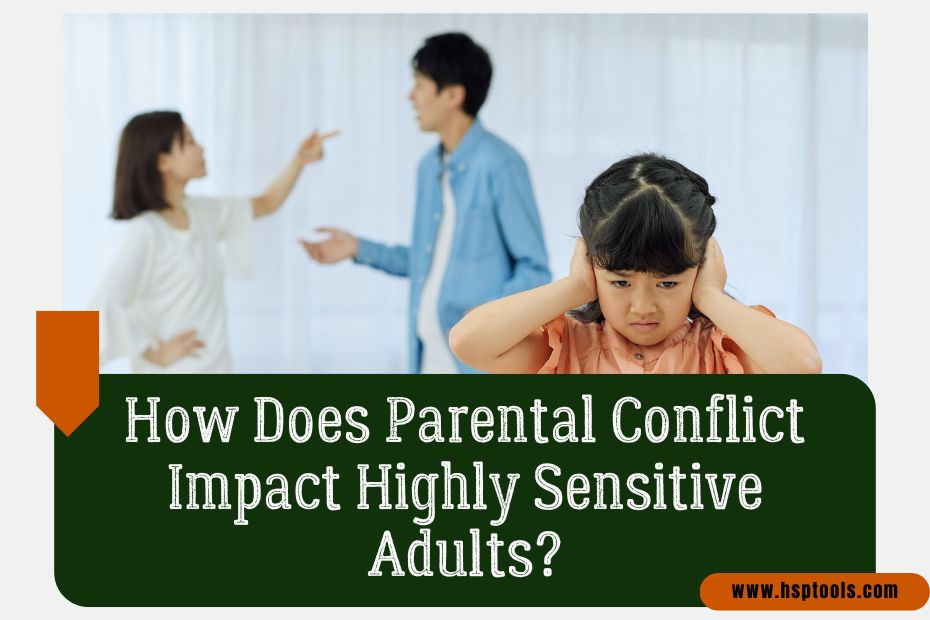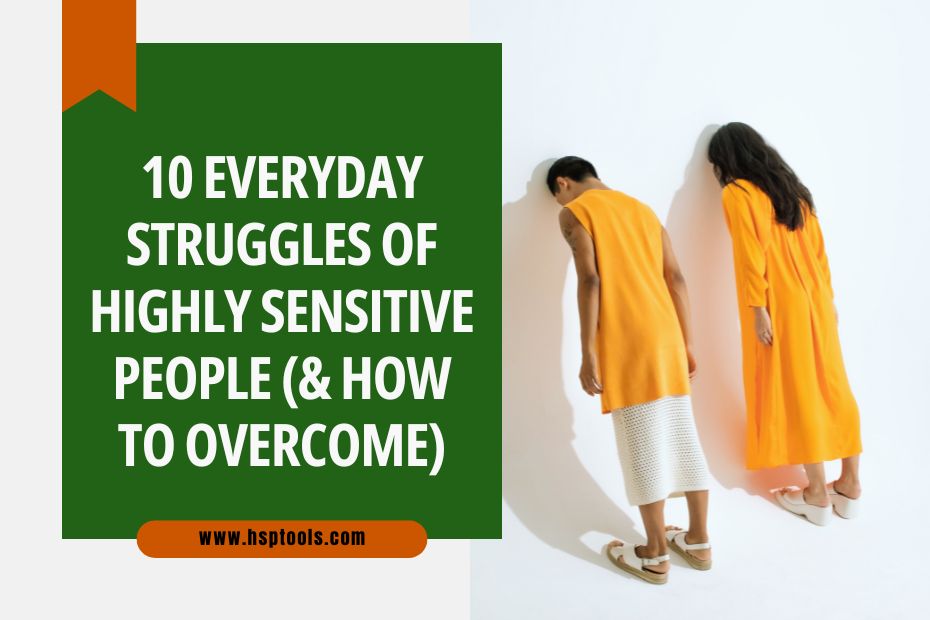Mayim Bialik Breaks Down Highly Sensitive People in this 1-hr Podcast Episode
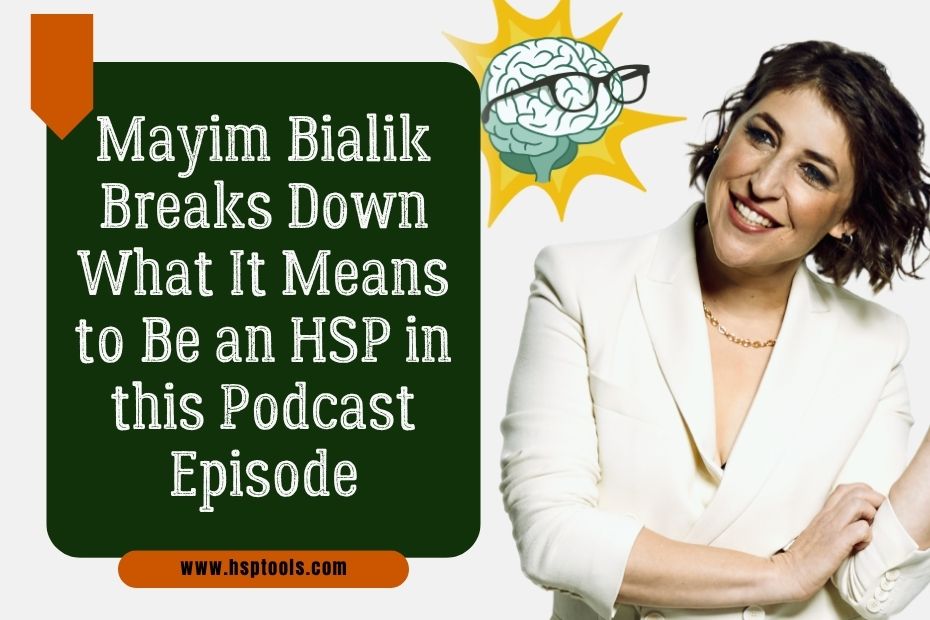
In a recent episode of the Mayim Bialik Breakdown podcast, the actress, neuroscientist, and mental health advocate turns her attention to Highly Sensitive People (HSPs)—a group often misunderstood in mainstream culture.
Together with co-host Jonathan Cohen, the episode explores what it really means to be highly sensitive through a research-informed lens and why this trait deserves more recognition, respect, and support.
Whether you identify as highly sensitive, are raising a sensitive child, or want to better understand the people in your life, this episode offers helpful insights grounded in both science and lived experience.
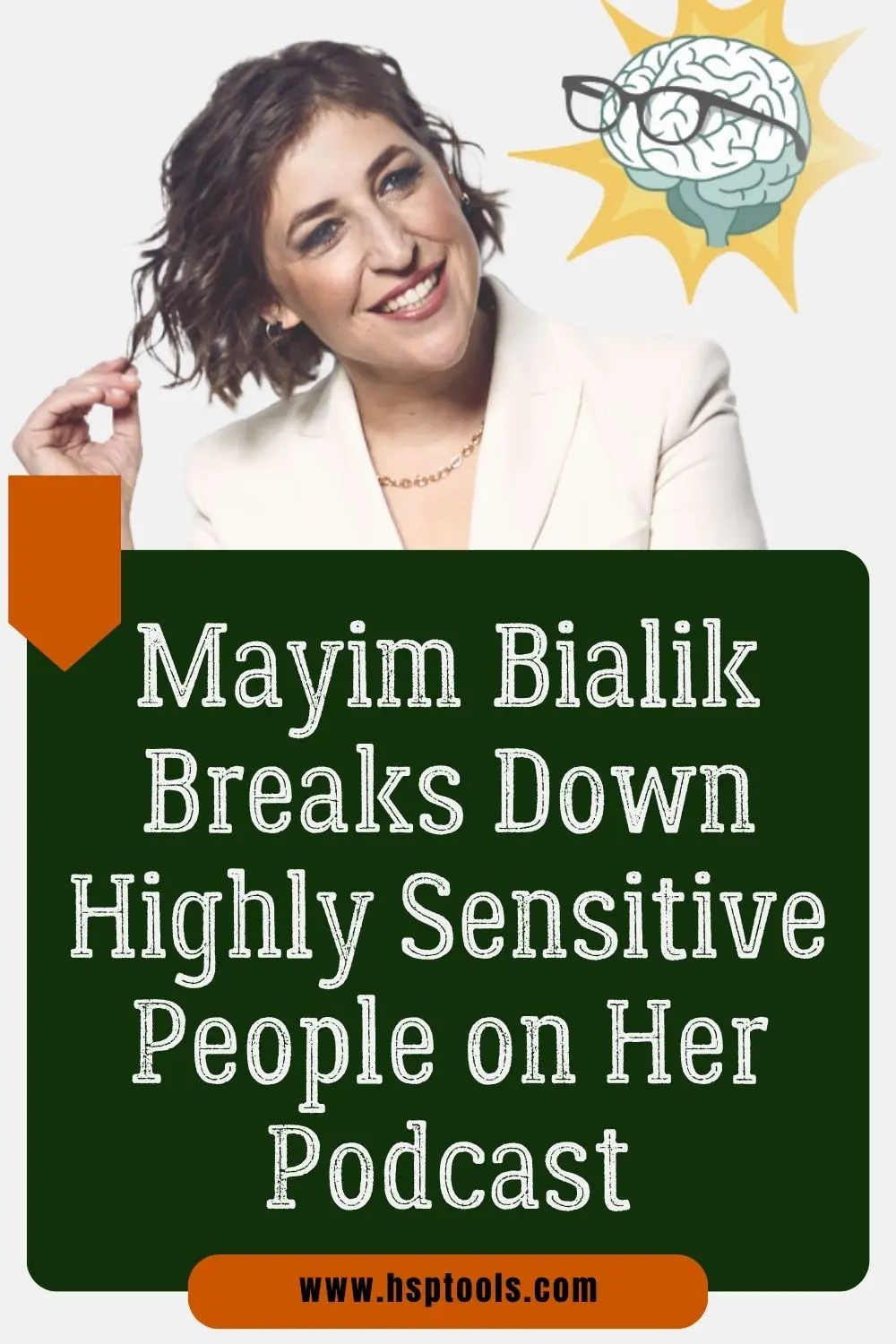
Disclaimer: This post includes affiliate links, meaning we will earn a commission if you click and purchase. Please know that you never pay extra and all our recommendations are based on products and services we believe in. Also, the text and images in this post were generated with the help of AI.
Highly Sensitive People by the Numbers
The Mayim Bialik Breakdown episode opens by grounding the conversation in facts that challenge common assumptions about sensitivity.
Here’s what we learn about how widespread and normal the trait really is:
- Roughly 20% of people are highly sensitive. That means 1 in 5 individuals may be navigating the world with heightened emotional and sensory awareness—making HSPs more common than left-handed people.
- An estimated 1.2 to 1.6 billion people globally are HSPs. This isn’t a niche trait—it’s a meaningful part of human diversity that shows up across all cultures and populations.
- The term “Highly Sensitive Person” was coined in the 1990s. Psychologist Dr. Elaine Aron introduced the term as part of her research into what she later called Sensory Processing Sensitivity—the scientific name for the trait.
- Sensitivity isn’t just a human experience. The episode points out that over 100 animal species exhibit similar traits, suggesting sensitivity may offer an evolutionary advantage, like increased awareness of threats or social dynamics.
- HSPs often go unrecognized or misunderstood. Because sensitivity isn’t always visible, many people grow up feeling “too much” or “overly emotional,” unaware that they’re part of a large, well-studied group.
This context helps reframe sensitivity as a legitimate, normal variation in human wiring that deserves more visibility and respect.
Key Traits of Highly Sensitive People
One of the strengths of this Mayim Bialik Breakdown episode is how clearly it outlines the core characteristics of HSPs as defined by Dr. Elaine Aron’s DOES model.
These include:
- Deep Processing: Highly sensitive people tend to reflect deeply on information, emotions, and experiences. They often think things through before acting and notice connections others might overlook.
- Overstimulation: HSPs can become easily overwhelmed in environments that are loud, chaotic, or fast-paced. Their nervous systems process more information, which can lead to quick sensory fatigue.
- Emotional Responsiveness: HSPs experience emotions intensely and are often deeply empathetic. They may be more moved by music, art, or others’ pain, which can be both enriching and exhausting.
- Sensitivity to Subtleties: Many HSPs pick up on small details that others miss—like tone of voice, body language, or shifts in mood. This perceptiveness often shows up as creativity, intuition, and aesthetic sensitivity.
Rather than framing these traits as burdens, the podcast emphasizes their value. When properly supported, these qualities can lead to stronger relationships, creative fulfillment, and meaningful contributions to society.
The Science of Sensitivity (as discussed on the Mayim Bialik Breakdown Podcast)
Thanks to Mayim Bialik’s neuroscience background, this podcast episode offers more than anecdotal insight. It includes science-backed evidence that supports the lived experiences of Highly Sensitive People.
Here are some key takeaways from the research discussed:
- HSP brains process information more deeply. Neuroimaging studies show heightened activity in areas of the brain associated with awareness, empathy, and sensory integration. This helps explain why HSPs are more responsive to both subtle details and emotional nuance.
- There’s a physiological basis for emotional intensity. Research reveals that HSPs react more strongly to emotional and social cues. They don’t just “feel more”—their nervous systems are biologically wired to process emotional stimuli more intensely.
- Sensitivity overlaps with certain personality traits. Highly sensitive people often score high in openness, conscientiousness, and emotional responsiveness. While some HSPs may also score high in neuroticism, this doesn’t mean they’re unstable—it simply reflects greater emotional depth and reactivity.
- HSPs are not the same as neurodivergent individuals. Although there may be shared experiences between HSPs and people who are autistic or ADHD, sensitivity is a separate, measurable trait. It appears across all types of neurocognitive profiles and is not considered a disorder.
- Sensitivity is evolutionarily adaptive. The episode points out that in both humans and animals, sensitivity can serve a survival function—like detecting threats earlier, reading social dynamics, or sensing environmental changes.
Altogether, this research helps validate sensitivity as a normal and valuable variation in human temperament. It’s a reminder that HSPs are not something to be fixed, hidden, or apologized for.
Challenges and Tools for HSPs
Other valuable takeaways from the Mayim Bialik Breakdown podcast focus on what life is like for sensitive people navigating a fast-paced world and tools to manage high sensitivity with intention.
They include:
- Suppressed needs can lead to burnout. Many HSPs are taught to ignore or hide their sensitivity, which over time results in anxiety, exhaustion, and a sense of disconnection.
- Breathwork can calm the nervous system. Simple breathing practices help HSPs regulate their internal state when external stimulation becomes too much.
- Boundaries are essential. Learning to say “no” protects energy and prevents overstimulation. Clear emotional boundaries are a form of self-care.
- Visualization builds resilience. Techniques like imagining a safe place or shielding oneself from others’ emotions can offer immediate grounding.
- HSPs often excel in caregiving or creative roles. Fields like the arts, therapy, teaching, and healing professions often provide environments where sensitivity is valued and put to good use.
These tools help HSPs work with their sensitivity instead of against it, leading to better well-being and greater self-trust.
Sensitivity in Childhood
The Mayim Bialik Breakdown episode also touches on how sensitivity shows up early in life and how crucial it is for adults to recognize and nurture it.
Mayim and Jonathan remind us that childhood experiences can shape whether an HSP grows up feeling empowered or ashamed of who they are.
- Sensitive children are often mislabeled. Without understanding, adults may see them as shy, dramatic, overly emotional, or difficult. These labels can harm self-esteem and discourage emotional expression.
- Supportive parenting makes a huge difference. When parents validate their child’s deep feelings and reactions, it builds emotional intelligence and resilience. Sensitivity becomes an asset, not a burden.
- Sensitive kids thrive in calm, attuned environments. Loud, chaotic, or high-pressure settings can easily overwhelm HSP children. They do best when their pace and needs are honored.
- They often show early empathy and insight. Many sensitive children are unusually perceptive, noticing subtleties in body language, tone, and mood that others miss. When encouraged, this becomes a powerful social strength.
- Early validation helps prevent burnout later in life. Adults who weren’t supported as sensitive kids may struggle with chronic anxiety, self-doubt, or people-pleasing—patterns that can often be traced back to childhood misunderstandings.
The episode makes it clear that raising a sensitive child isn’t about toughening them up. It’s about helping them build the confidence to thrive in a world that doesn’t always reflect their depth.
Sensitivity as a Strength
This Mayim Bialik Breakdown episode closes with one of the most important takeaways: sensitivity is not something to overcome. It’s something to embrace!
When HSPs stop apologizing for who they are, they unlock a powerful set of traits the world deeply needs.
- Sensitivity offers unique insight. HSPs often notice what others miss—whether in people, systems, or creative work. This perceptiveness leads to innovation, intuition, and emotional clarity.
- Empathy drives meaningful connection. Because HSPs feel so deeply, they’re often the ones creating safe spaces, asking thoughtful questions, or recognizing unspoken needs in others.
- Creativity thrives in sensitive minds. Many HSPs are drawn to artistic, caregiving, or advocacy roles, where their emotional richness becomes a creative or healing force.
- Sensitivity isn’t a flaw—it’s a different lens. Rather than seeing themselves as fragile or reactive, HSPs are encouraged to view their sensitivity as a valid and valuable way of engaging with the world.
- Reframing is empowering. When HSPs shift from “I’m too sensitive” to “I have a perspective that matters,” they begin to show up more fully—without shame, and with purpose.
This reframe discussion is what makes the episode so powerful. It doesn’t just describe the HSP experience, it honors it.
Watch the Podcast Episode
To explore all these insights in full, you can watch the episode of The Mayim Bialik Breakdown on YouTube or find it on your favorite podcast platform.
It’s a validating, practical, and inspiring listen for anyone navigating sensitivity or supporting someone who is.
For more support and guidance, explore the HSP Tools directory or download this list of 300+ resources for Highly Sensitive People.

